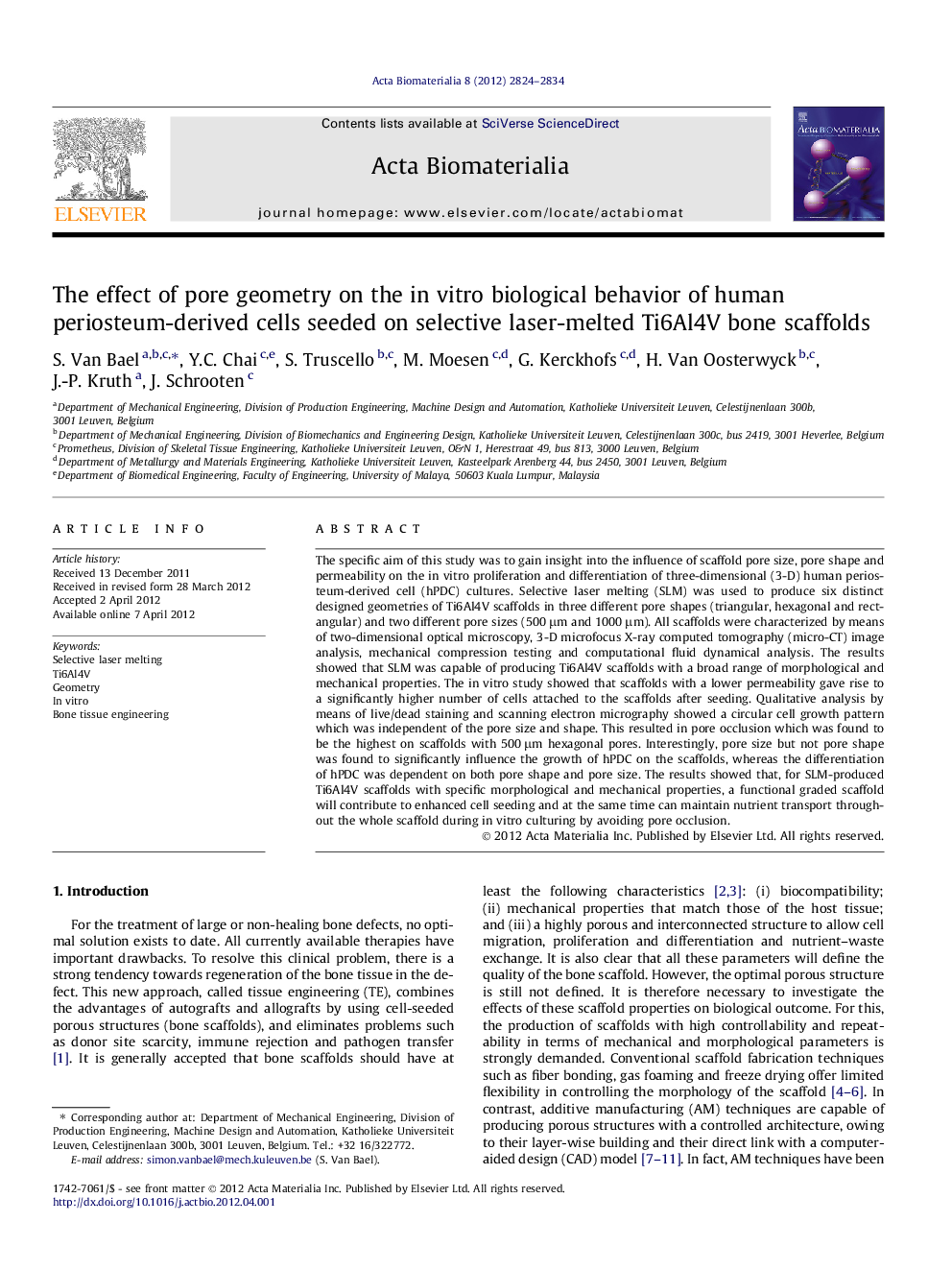| Article ID | Journal | Published Year | Pages | File Type |
|---|---|---|---|---|
| 10159705 | Acta Biomaterialia | 2012 | 11 Pages |
Abstract
The specific aim of this study was to gain insight into the influence of scaffold pore size, pore shape and permeability on the in vitro proliferation and differentiation of three-dimensional (3-D) human periosteum-derived cell (hPDC) cultures. Selective laser melting (SLM) was used to produce six distinct designed geometries of Ti6Al4V scaffolds in three different pore shapes (triangular, hexagonal and rectangular) and two different pore sizes (500 μm and 1000 μm). All scaffolds were characterized by means of two-dimensional optical microscopy, 3-D microfocus X-ray computed tomography (micro-CT) image analysis, mechanical compression testing and computational fluid dynamical analysis. The results showed that SLM was capable of producing Ti6Al4V scaffolds with a broad range of morphological and mechanical properties. The in vitro study showed that scaffolds with a lower permeability gave rise to a significantly higher number of cells attached to the scaffolds after seeding. Qualitative analysis by means of live/dead staining and scanning electron micrography showed a circular cell growth pattern which was independent of the pore size and shape. This resulted in pore occlusion which was found to be the highest on scaffolds with 500 μm hexagonal pores. Interestingly, pore size but not pore shape was found to significantly influence the growth of hPDC on the scaffolds, whereas the differentiation of hPDC was dependent on both pore shape and pore size. The results showed that, for SLM-produced Ti6Al4V scaffolds with specific morphological and mechanical properties, a functional graded scaffold will contribute to enhanced cell seeding and at the same time can maintain nutrient transport throughout the whole scaffold during in vitro culturing by avoiding pore occlusion.
Related Topics
Physical Sciences and Engineering
Chemical Engineering
Bioengineering
Authors
S. Van Bael, Y.C. Chai, S. Truscello, M. Moesen, G. Kerckhofs, H. Van Oosterwyck, J.-P. Kruth, J. Schrooten,
